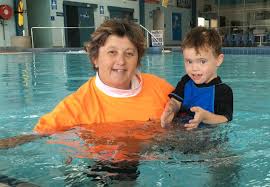An essential guide to water safety courses for families and educators across Australia
The Quiet Danger in Our Backyards
Drowning is one of the leading causes of death in young children in Australia. For every fatal drowning, several more suffer long-term health complications from non-fatal incidents. Yet many of these tragedies are preventable. The key? Early water safety education.
Every paddling pool, beach day, or backyard swim brings risk—and with toddlers naturally drawn to water, parents and carers are often only one distraction away from disaster. That’s why a water safety course isn’t something to consider later. It’s something to prioritise now.
Why Early Water Safety Training Matters
Children are impressionable, physically agile, and absorb information at lightning speed during the early years. By introducing water safety principles before school age, we tap into that developmental window—one where habits form and instinctive behaviours take root.
Builds confidence and reduces fear
Enrolling children in a water safety course early gives them familiarity with water. This can help reduce fear and anxiety, while still teaching them to respect water’s dangers. It’s not about making kids fearless—it’s about making them aware, prepared, and capable of responding calmly in risky situations.
Teaches parents how to supervise effectively
Courses aimed at younger children often include a component for parents and carers. From learning about safe rescue techniques to recognising signs of distress in the water, the adult education aspect is just as valuable. It equips families with practical tools and better habits around water use.
Creates long-term behavioural change
The earlier a child learns about water safety, the more deeply those lessons are embedded. Just like road safety or sun protection, water safety needs to become second nature.
Studies show that children aged 1–4 who participate in structured swimming and safety programs have a significantly reduced risk of drowning compared to those who don’t. (source)
What to Expect in a Water Safety Course
So what exactly do these courses teach? That depends on the provider and age group, but most water safety course programs for young children include the following:
- Basic water familiarisation: floating, blowing bubbles, safe entry and exit.
- Survival skills: floating on the back, calling for help, basic propulsion through water.
- Recognition of hazards: identifying safe vs. unsafe water environments.
- Supervised play: learning through experience while under trained supervision.
For parents, many courses also include modules on:
- Safe home pool practices
- Emergency response steps
- Water safety myths (e.g., floaties make kids safe)
- CPR overviews
If you’re unsure where to begin, this water safety course page breaks down the essentials and offers guidance across all age levels.
How Early is Too Early?
The general recommendation is to begin water safety education from six months of age. This doesn’t mean teaching babies how to swim laps, but rather helping them get comfortable in water, learn breath control, and understand basic cues.
At this age, the course is less about instruction and more about exposure. The goal is to introduce water in a controlled, positive, and safe environment—building confidence for both child and parent.
By the time children reach preschool age, they can grasp more structured concepts. That’s when safety messages like “never go near water without an adult” or “if you fall in, roll to your back” begin to take hold.
Addressing Cultural and Community Gaps
Australia’s multicultural population means water experience varies dramatically across households. Some children grow up around beaches and pools. Others, especially in new migrant communities, may have had limited or no exposure to water recreation or swimming education.
A water safety course plays a vital role in bridging that gap—delivering education that’s accessible, visual, and often multilingual. More inclusive programs are crucial to making sure all kids, regardless of background, learn how to stay safe near water.
You can explore the right fit for your family’s needs by browsing through this dedicated water safety course list that includes beginner pathways and locations near you.
The Role of Early Childhood Services and Schools
While some preschools and kindergartens run basic water safety awareness sessions, they’re often limited in scope. The responsibility falls largely on parents and guardians to enrol children in structured programs outside of school hours.
However, more councils and early learning centres are recognising the importance of integrating water safety as a core part of early education. Educators are encouraged to promote conversations about safe behaviour near lakes, bathtubs, creeks, and pools—places where incidents can happen in seconds.
If you’re an educator or part of a local childcare organisation, consider connecting with certified water safety course providers through platforms like this one. These services often support curriculum-based safety integration and on-site programs.
Final Thoughts: Prevention Starts Before Primary School
Drowning doesn’t discriminate—it affects infants in bathtubs, toddlers near fishponds, and school-age kids in pools or surf. The earlier children are introduced to safe water behaviours, the better their odds of avoiding harm.
A water safety course isn’t a box to tick—it’s a life-saving investment in your child’s future. Whether your family swims weekly or only on summer holidays, those first lessons can make all the difference.
Take the next step. Find the right water safety course for your child. Because prevention doesn’t start at the school gate—it starts at home, and it starts early.

